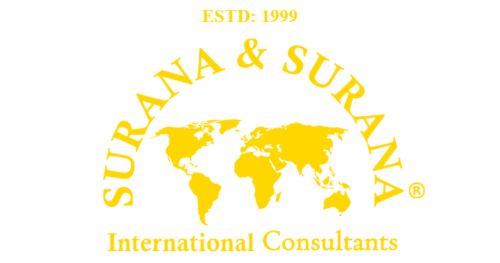
Introduction
In today’s hyper-connected world, a single misstep can send your brand image plummeting faster than a viral tweet on a slow internet connection. Gone are the days of controlled narratives and PR magic; reputation now dances to the relentless rhythm of social media and instant judgment. But fear not, for amidst this digital maelstrom lies a potent weapon: a strategic approach to safeguarding your corporate reputation.
Consider this:
- 84% of CEOs identify effective stakeholder engagement as crucial for long-term value creation. Yet, 73% of consumers lose trust in a brand after a single negative experience.
- Companies with strong reputations enjoy a 30% premium in shareholder value. Conversely, a one-point decrease in corporate reputation score can slash 5% off your market value.
- Proactive risk management practices can reduce the impact of unexpected events by as much as 50%. Neglecting such measures? Prepare for a potential 70% loss in market value.
- These are not mere statistics; they are war cries and cautionary tales etched in the digital battlefield. They underscore the urgent need for a data-driven, proactive, and holistic approach to brand fortification.
Strategic Alignment and Reputation Management
In today’s hyperconnected world, a company’s reputation is its most valuable asset. But simply having a good reputation isn’t enough. True success lies in ensuring that your reputation management efforts are seamlessly integrated with your overall business strategy. This strategic alignment is the secret sauce that turns fleeting positive buzz into sustainable brand loyalty and growth.
Unlocking the Power of Alignment:
- Financial Impact: Studies show a direct correlation between reputation and revenue. A 5-point increase in corporate reputation score can lead to a 4.1% increase in revenue, while misaligned strategies can result in financial losses ranging from 20% to 70% of market value.
- Decision-Making Clarity: Alignment provides a clear roadmap for reputation management initiatives. Decisions become data-driven, focusing on protecting core values like transparency, sustainability, or customer focus, which directly enhance brand reputation.
- Employee Engagement: When employees understand how their actions contribute to the strategic vision and reputation goals, it boosts morale and engagement, further strengthening the brand from within.
Putting Alignment into Practice:
- Conduct a Reputation Audit: Understand your current online and offline reputation, key stakeholders’ perceptions, and existing efforts’ effectiveness.
- Define Your Core and Strategic Objectives: Clearly articulate your core values and outline your long-term strategic objectives with relevant KPIs.
- Align Initiatives with Goals: Develop specific tactics that support your strategic objectives, integrate reputation management into daily operations, and establish a transparent communication strategy.
- Track and Measure Progress: Monitor your reputation metrics, assess alignment regularly, and conduct periodic audits for continuous improvement.
Stakeholder Analysis and Engagement
In today’s interconnected world, no company can build a strong reputation without actively engaging its stakeholders. These diverse groups, from employees and customers to investors and communities, form the bedrock of your brand’s perception. Let’s delve deeper into how strategic stakeholder engagement can be your secret weapon for building trust, mitigating risks, and ultimately bolstering your reputation:
The Power of Engagement:
- Shared Success: By understanding and addressing stakeholder needs, you create a sense of shared ownership and mutual benefit. This collaborative approach fosters loyalty and advocates for your brand, boosting your reputation organically.
- Early Warning System: Stakeholders can be your eyes and ears on the ground, highlighting potential issues before they escalate into full-blown crises. Proactive engagement allows you to address concerns quickly and effectively, minimizing reputational damage.
- Enhanced Transparency: Open and honest communication with stakeholders builds trust and credibility, two cornerstones of a positive reputation. By demonstrating transparency, you show that you value their opinions and are committed to responsible business practices.
Understanding Your Audience:
- Stakeholder Mapping: Identify your key stakeholders and map their interests, expectations, and potential influence on your reputation. This helps you tailor your communication strategies to each group.
- Active Listening: Engage in meaningful dialogue with stakeholders, listening to their concerns and feedback without judgment. This demonstrates your commitment to understanding their perspective and building strong relationships.
- Tailored Communication: Develop diverse communication channels and messages that resonate with each stakeholder group. Consider their preferred platforms, information needs, and level of technical expertise.
Risk Management and Scenario Planning
In today’s unpredictable world, a single misstep can leave a dent in your carefully built reputation. But fear not! Proactive risk management and scenario planning are your allies in navigating uncertainty and safeguarding your brand image. Let’s explore how these powerful tools can shield your reputation from potential dangers:
The Shield of Proactive Risk Management:
- Anticipate the Threat: Instead of waiting for crises to erupt, identify potential reputational risks lurking in your internal and external environments. Analyze industry trends, competitor actions, customer sentiment, and internal vulnerabilities to uncover potential threats.
- Assess the Impact: Not all risks are created equal. Evaluate the likelihood and severity of each identified risk to prioritize your efforts. A looming data breach requires a swifter response than a disgruntled customer tweet.
- Build Your Contingency Plan: Be prepared with actionable plans for each risk scenario. Define mitigation strategies, communication protocols, and responsible teams to ensure a swift and effective response when the time comes.
Scenario Planning: War Games for Your Reputation:
- Simulate the Storm: Visualize diverse crisis scenarios, from product recalls to social media firestorms. Enacting these simulations helps identify potential pitfalls and refine your response mechanisms.
- Stress-Test Your Systems: Put your crisis management plan to the test through simulated drills and role-playing exercises. This exposes weaknesses in your response and allows you to fine-tune your approach before a real crisis hits.
- Stay Agile and Adaptable: Remember, no plan survives unforeseen circumstances. Foster a culture of flexibility and adaptation within your team, empowering them to adjust strategies and responses as situations evolve.
Leadership and Organizational Culture
A company’s reputation is more than just a logo or tagline; it’s the story whispered by stakeholders, echoing in every interaction. And at the heart of this narrative lies its leadership. These are the individuals who not only steer the ship but also set the moral compass, shaping perceptions and shaping trust. Let’s explore how strong leadership can elevate a brand’s reputation to new heights:
The Guiding Light of Values:
- Embodiment of Ethics: True leaders are more than just figureheads; they are living embodiments of the company’s core values. Their actions, decisions, and communication consistently reflect the principles of integrity, transparency, and social responsibility, solidifying trust and admiration.
- Champions of Quality: Leaders set the bar high for excellence and dedication to quality. They prioritize ethical sourcing, sustainable practices, and customer-centricity, ensuring that every aspect of the company’s operations contributes to a positive reputation.
- Guardians of Purpose: Strong leaders keep the company’s mission and vision at the forefront, aligning decisions with long-term goals and a genuine desire to make a positive impact. This sense of purpose resonates with stakeholders, boosting brand loyalty and advocacy.
Cultivating a Culture of Values:
- Leading by Example: Actions speak louder than words. Leaders who consistently demonstrate ethical behavior and commitment to values naturally inspire and empower their employees to do the same. This top-down approach sets the tone for a positive organizational culture.
- Empowered Advocates: When employees feel valued and engaged, they become the strongest advocates for the brand. Leaders who cultivate a supportive and inclusive environment encourage employees to uphold the values that contribute to a strong reputation.
- Open Communication and Dialogue: Fostering a culture of open communication and transparency allows employees to raise concerns, offer feedback, and actively participate in upholding the company’s values. This collaborative approach strengthens the sense of ownership and responsibility, further bolstering the reputation.
Legal and Ethical Considerations
In today’s world, a company’s reputation isn’t built solely on catchy slogans or innovative products. It rests on a solid foundation of ethical and legal conduct. These unwavering principles are the cornerstones that hold up a positive reputation, protecting it from the tremors of scandal and fostering enduring trust with stakeholders. Let’s explore why legal and ethical adherence are the bedrock of a brand’s strength:
The Pillar of Lawfulness:
- Compliance is Key: Companies must be vigilant about complying with all applicable laws and regulations. This applies to everything from labor and environmental standards to financial reporting and data privacy. Failing to comply can result in hefty fines, legal repercussions, and a tarnished reputation that’s difficult to repair.
- Transparency Matters: Openness and honesty about legal compliance efforts go a long way in building trust. Regularly publishing compliance reports and actively engaging with regulatory bodies demonstrate a commitment to upholding the law and operating with integrity.
- Proactive Prevention: Don’t wait for trouble to find you. Investing in ethical and legal training for employees, establishing clear internal compliance policies, and implementing robust due diligence measures can proactively prevent breaches and build a culture of responsible behavior.
The Beacon of Ethics:
- Beyond the Law: Ethics go beyond the letter of the law, guiding us towards moral and socially responsible choices. This could involve prioritizing sustainability practices, fair treatment of employees, and responsible sourcing of materials, even when not explicitly mandated by law.
- Leading by Example: Ethical conduct starts at the top. Leaders who make ethical decisions and speak out against wrongdoing pave the way for a culture where these values are embraced at all levels.
- Taking Responsibility: When ethical lapses occur, owning up to them and taking swift corrective action is crucial. Transparency and a genuine commitment to improvement can mitigate reputational damage and demonstrate a sincere dedication to ethical principles.
Innovation and Adaptability
Companies that cling to outdated practices and resist the current will inevitably find their reputations drifting further and further from shore. But for those who embrace continuous innovation and adaptability, the waves become a thrilling ride, propelling them towards a thriving reputation that shines on the horizon. Let’s explore why these forces are the lifeblood of a brand’s enduring image:
Navigating the Currents of Change:
- Trendspotting Prowess: Stay ahead of the curve by actively monitoring market trends, identifying emerging technologies, and anticipating shifts in customer preferences. Don’t wait for waves to crash down; anticipate their direction and adjust your course accordingly.
- Open to Feedback: Stakeholder expectations are constantly evolving. Embrace open communication with customers, employees, and investors to understand their changing needs and adapt your offerings and practices to meet them.
- Agile Decision-Making: Ditch rigid hierarchies and embrace flexible structures that empower teams to quickly respond to unforeseen challenges and capitalize on new opportunities. This agility ensures your reputation as a forward-thinking leader, ready to weather any storm.
Innovation: The Engine of a Dynamic Reputation:
- Fresh Ideas for Brighter Shores: Invest in research and development, encourage employee creativity, and foster a culture of experimentation. New products, services, and operational methods can not only propel business growth but also demonstrate your commitment to pushing boundaries and exceeding expectations.
- Technology as Your Compass: Don’t fear the digital tide; embrace technological advancements like automation, artificial intelligence, and data analytics. These tools can enhance efficiency, personalize customer experiences, and fuel groundbreaking innovations, showcasing your brand’s dynamism.
- Social Responsibility as the Guiding Star: Integrate sustainability and social responsibility into your innovation efforts. Develop eco-friendly solutions, embrace ethical sourcing practices, and address societal challenges through your innovations. This forward-thinking approach will resonate with stakeholders and solidify your reputation as a brand that cares.
Conclusion
Safeguarding corporate reputation and brand image is a multifaceted endeavor that requires a strategic and integrated approach. By focusing on strategic alignment, stakeholder engagement, risk management, performance measurement, leadership, legal and ethical considerations, and innovation, companies can effectively protect and enhance their reputation, driving long-term business success.



